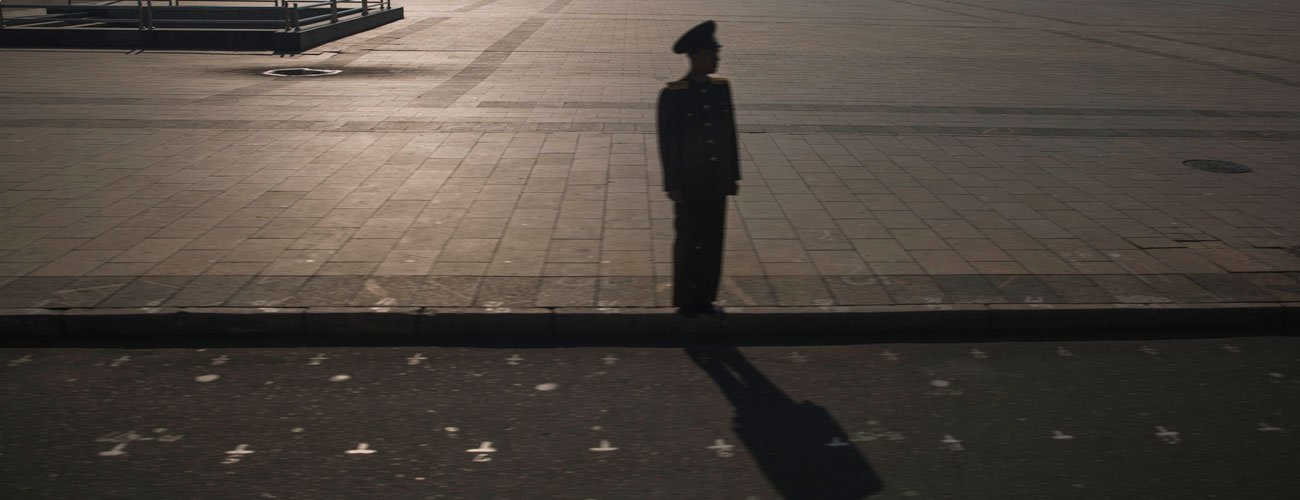Sign up for The Media Today, CJR’s daily newsletter.
It was the longest David Guttenfelder had been away from North Korea in four years.
Last June, the Iowa native and former chief Asia photographer for The Associated Press joined National Geographic and returned to the US to start the second act of his career.
Across two decades at the AP, Guttenfelder lived in Tokyo, New Delhi, Nairobi, and the Ivory Coast’s Abidjan. He shot from Afghanistan’s treacherous Korengal Valley and covered Typhoon Haiyan’s destruction in the Philippines. And he helped open the AP’s news bureau in Pyongyang in 2012, an unprecedented move for a Western news agency.
This May, Guttenfelder was back. For The New York Times, he followed the feminist leader Gloria Steinem and 30 peace activists as they marched across the demilitarized zone that has long cleaved Korea in two. Guttenfelder had pitched the idea to the Times, but they wanted more than a spot story.
Guttenfelder has long trained his lens on quotidian life in the reclusive nation, and this trip was no exception. In one image, a young girl in physical rehabilitation is strapped by the waist to the kind of vibrating belt that conjures images of 1950s American housewives trying to burn fat. A recent photo essay shows objects like pine mushroom alcohol and toothpicks made from hedgehog spines. Guttenfelder’s years of work in North Korea convey both a bizarre alternate reality and an intimately recognizable common humanity via mundane everyday routines.

To capture normalcy, it helps to shoot on an iPhone. Here, Guttenfelder, a judge for Getty Images’ recently announced grant for Instagram photographers, is prolific. Phone cameras are familiar to city-dwelling North Koreans, Guttenfelder says, and may be less intimidating to both subjects and his state minders. Aside from a minder, he needs government permission to travel anywhere, and cannot do interviews in private. However, Guttenfelder says, once he arrives at a shoot, he can photograph whatever he wants—a dramatic contrast from when he traveled to Pyongyang a decade-and-a-half ago to find his hotel windows covered. “Their idea of what a journalist does is a propagandist, so they worry about how you’re going to represent their country,” he says. “And that’s really opened up.”
In mid-June, Guttenfelder was on assignment for National Geographic in Yellowstone National Park. While he’s been able to use Foursquare and Instagram in Pyongyang since 2013, there were gaping holes in phone service across Wyoming and Montana. “I’ve never photographed America before. Now I’ve been working in all these wild, quintessentially American places. I had to learn how to ride a horse, I had to learn about bears and wolves,” he says. “In fact, coming home after 20 years, I feel like I’m in a foreign country. It feels a lot like I’m on a foreign assignment.”
If the US feels unfamiliar, what feels like home? “Honestly, as a photographer I felt like I was on really familiar ground, able to work very efficiently, when I was in North Korea,” he says.
Guttenfelder’s challenge in the last year, then, has been reinvention. “You become known for something and then you go take pictures of bison, and I’m probably the 100th-best bison photographer in North America,” he says. “I had a very clear purpose and identity as a photographer. Finding new purpose is exciting, but it’s not easy.”







.
Has America ever needed a media defender more than now? Help us by joining CJR today.



